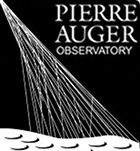

CROME experiment
The main goal of the CROME (Cosmic Ray Observation via Microwave Emission) experiment is exploring of possible
microwave detection of extensive air showers.
This experiment is being performed in international collaboration, in particulary
with the Karlsruhe Institute of Technology (Germany). Recent observation of microwave radiation induced by particle
cascades in the air brings new possibility of cosmic rays detection in the highest energy band
[Gorham et al., Phys. Rev. D 78, 032007 (2008)]. Microwave radiation of such a cascade is expected to be isotropic,
similary like fluorescence radiation. This makes possible to detect extensive particle shower by means
of the microwave techniques. What's more, in opposite to fluorescense radiation, microwave detecion is supposed
to be proceeded constantly, omitting dependences of weather or light conditions, resulting in enormously
increasing of data acquisition. Common accessibility of microwave devices, such as used in television
transmissions, allows one to build cheap and effective air shower detectors, which could be used as alternative to
much more expensive fluorescence detectors.
Microwave emission mechanism is not yet definitively unveiled. We expect that microwave emission
is emitted as bremstrahlung
mechanism on air molecules (molecular bremsstrahlung radiation, MBR). Such radiation should be inconherent
and unpolarised. But, in general, other emission mechanisms are possible, like radio-emission of charged
shower's particles, coherent radiation caused by time changing charge distribution in shower (Askarian effect),
or as deflection effect in geomagnetic field. Time compressed radio signal also can be regarded as microwave
radiation source, since such compression shifts the human-origin signals (radio, TV) to higher frequencies,
being reflected from shower made plasma.
Detectors
The CROME detectors are located on the KASKADE-Grande detector field used to detect extensive air showers,
in Karlsruhe - Germany.
To facilitate identification of shower microvawe signal,
CROME detectors work in coincidence with detection achieved using KASKADE-Grande.
Only showers which cross the CROME field of view are expected to produce the micriwave signal in the CROME detection.
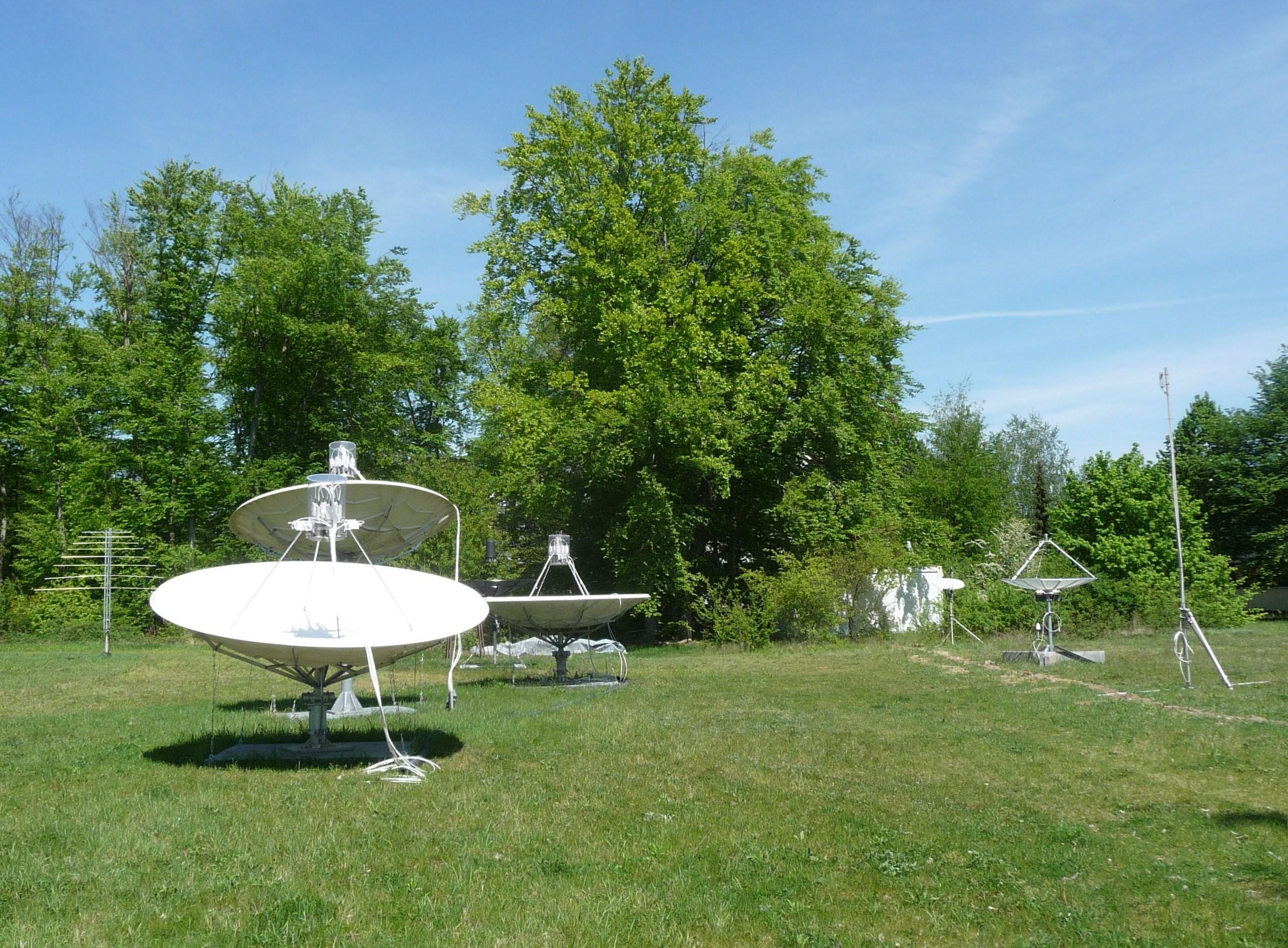
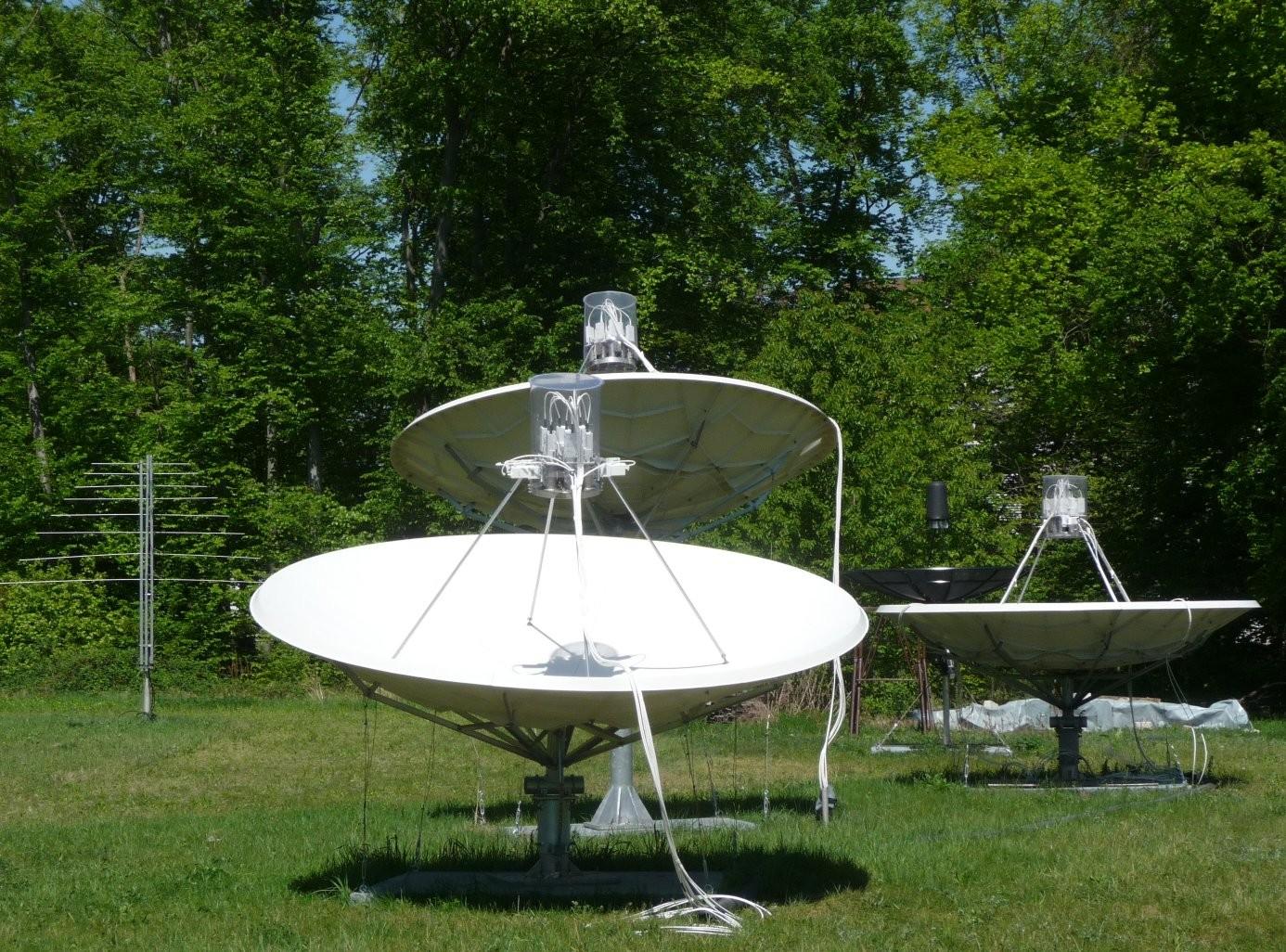
Receiver system of CROME detector (left photo).
Three receiving antennas working in the C-band (3.4-4.2 GHz, right photo).
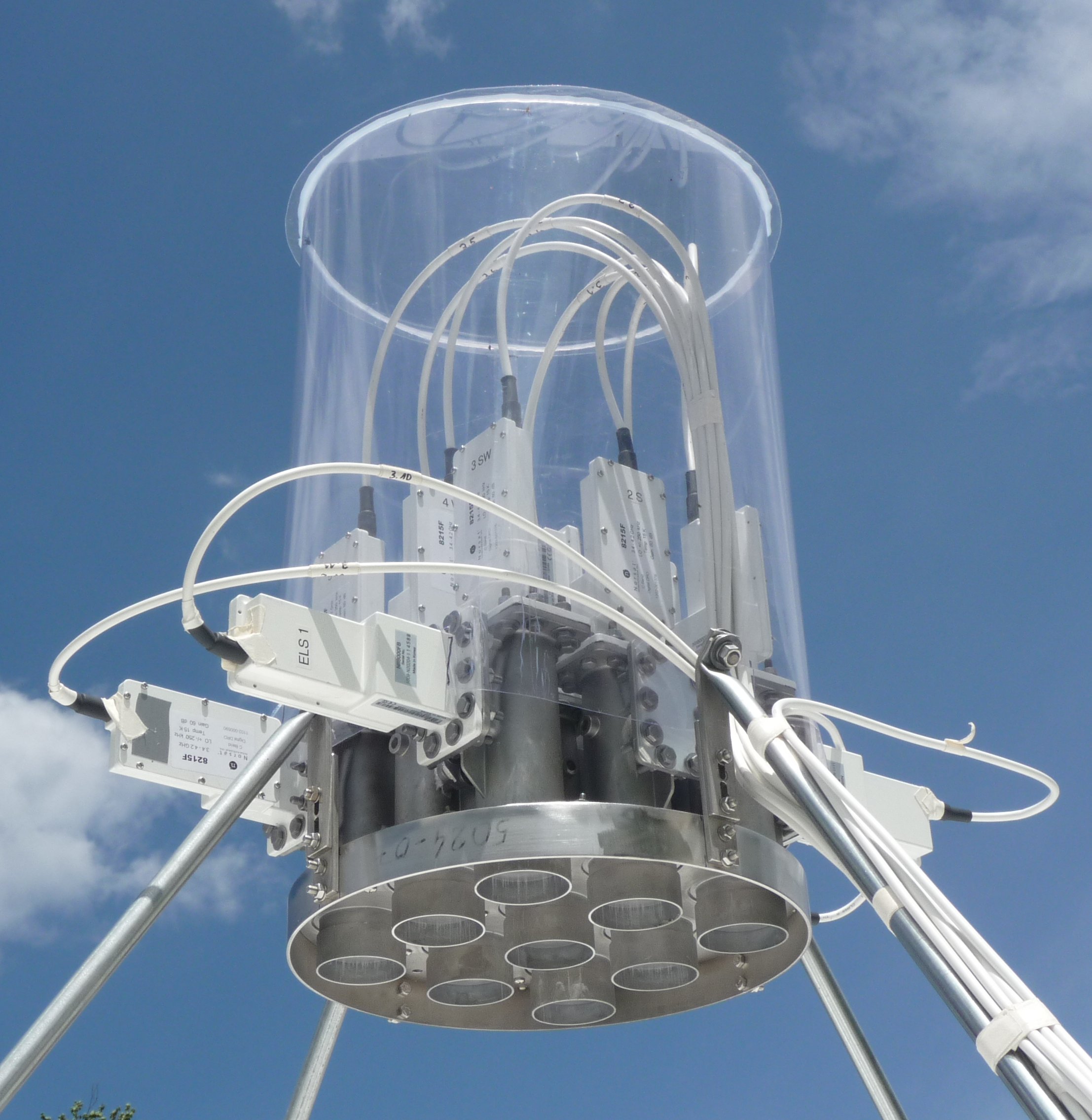
Receivers placed in focus of one of three antennas.
Receivers used in CROME experiment are working in L-band (1.2-1.7 GHz), C-band (3.4-4.2 GHz), and in Ku-band (10.7-12.7 GHz). Lower frequencies bands are also used, like Very High Frequencies and Very Low Frequencies. Since the noise level is lowest in C-band this band is used most frequently. The complete detection system is composed of three parabolic antennas with diameter 335 cm. In focus of each antenna there's a camera of 9-channel, linearly polarised receiver. Since Doppler effect couses short-time impulses coming from particle showers it is necessary to use fast readout and acquisition electronic circuits. Their time constant is 4 ns.
Signals from each channel are sampled by fast 4-channel analysers PicoScope, using integration time 0.8 ns, and with 8-bit dynamic range. Signals from all channels are read in time window 10 μs before, and 10 μs after the trigger signal from KASKADE-Grande. GPS time allows one to link signals received by CROME with signals from KASKADE-Grande. Signals received in the CROME detector is scrutinized to identify microwave signal coming from extensive air showers registered independently by KASKADE-Grande detector and traversing the CROME field of view.
The complete calibration of the system was performed by using a microwave transmitter attached to flying remote-controlled octocopter, which was positioned in the field of view of CROME antennas using the GPS signal. The detector charasteristics obtained was in good agreement with simulations. The noise temperature of the entire system is about 50 K.

Octocopter used to calibrate CROME detector
Results
Since the beginning of CROME operation in May 2011, signals from 30 showers with energies above 3x1016 eV were recorded. Received signals were quite short with duration about 10 ns, angle between axes of shower core and direction of observation are small - few degrees. The distances between antenna and shower cores are of order 100 m. In general, such characteristics of received signals is compatible with their Cherenkov-type origin.
Events with higher energies were also detected in the VHF band (few-tens of MHz). There is a clear difference between signals recorded in East-West and North-South polarized channels of receiver. This indicates geomagnetic emission mechanism.
A comparison of the experimental data with characterisctics of radio emission obtained from simulations is presented in the sketch below. Squares indicate location of antennas, in which microwave signal was detected, relative to locations of shower cores detected by KASKADE-Grande. Core locations of all considered showers are shifted to the origin of coordinate system. The simulated intensity distribution of electrical field on ground is due to radio-emission of air shower is marked using different colors. It is clearly seen that detection locations of microwave signals are located in ring-shaped area, which is in agreement with shower radiation pattern obtained from simulations. This indicates that the received signal from showers is a time-compressed geomagnetic radiation, rather than molecular bremsstrahlung radiation.
Further analysis is still ongoing.
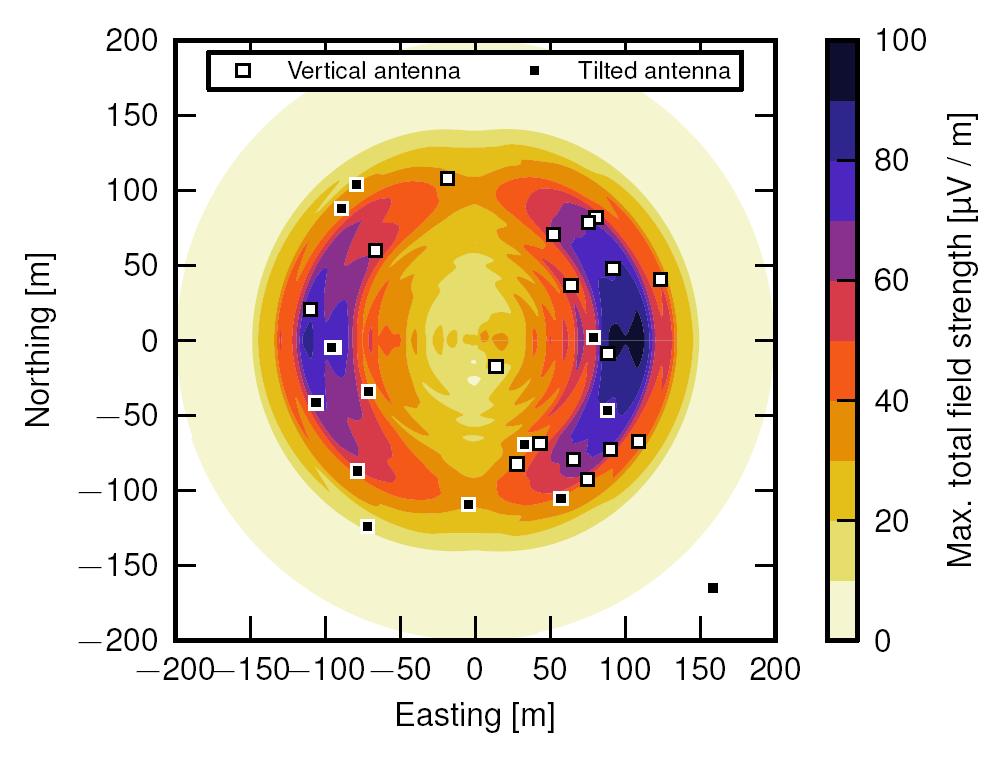
Comparision of experimental data from CROME with expected characteristics of radio emission of
extensive air shower.
Radar
In parallel to CROME experiment other possible detecion method of air shower is investigated, using radar technique. In this project we study the phenomena of reflection of radio waves off plasma created in the air by ionizating particles of a shower. An analysis of the air shower plasma showed that the proper approach is to consider wave reflections from individual charges in plasma, rather than from the core as whole. Integrating all contributions and accounting for interference of reflected waves allows one to calculate reflected wave reaching the detector located on the ground. Since shower front moves with velocity close to the velocity of light, the Doppler effect makes signal compression in time, and changes frequency of the reflected wave, compared to frequency of the emitted one. Using proper frequency of emitted wave we may be able to tune the reflected wave so it can be received by the CROME detector. In general: by supplementing CROME detector with an emitting antenna, we should be able to receive the radar echo from air showers.
The radar echo simulations shows that the received signal depends strongly on detector geometry. The length of the recorded radio echo as well as power and frequency of the received wave depend on shower direction, and shower distance to the receiving antenna. If the receiving antenna lies outside the Cherenkov cone (the most common case), the frequency of received signal decreases in time, and the signal amplitude increases. The power of the received signal depends also on frequency of the emitted wave, which is a result of interference of contributions reflected from different parts of the shower front. Since the frequency upshift caused by reflection from shower front depends on the detection system geometry, it is possible to determine the optimal frequency of emitted wave and required detection sensitivity.
This research is under way.

Typical spectrogram of radar echo. Signal is composed of two parts: an initial signal with high frequency
and small amplitude, and a signal with low frequency and larger amplitude (which is easier to detect).
Acknowledgment
Participation of the research team from the Institute of Nuclear Physics of the Polish Academy of Sciences
in the CROME experiment is
partially supported by the National Center for Research and Development (grant ERA-NET-ASPERA/01/11).

Publications
Microwave Emission due to Molecular Bremsstrahlung in Non-Thermal Air Shower Plasmas
Neunteufel, P. et al.,
Proceedings of the 33rd International Cosmic Ray Conference (ICRC 2013), Rio de Janeiro (2013)
Observation of Coherent Microwave Emission from Air Showers by CROME
Šmída, R. et al.,
Proceedings of the 33rd International Cosmic Ray Conference (ICRC 2013), Rio de Janeiro (2013)
Observation of Polarised Microwave Emission from Cosmic Ray Air Showers
Šmída, R. et al.,
arXiv:1306.6738 (2013)
Enhancement of the radar signal of air showers due to time compression
Stasielak, J. et al.,
Proceedings of the 33rd International Cosmic Ray Conference (ICRC 2013), Rio de Janeiro, arXiv:1310.0743 (2013)
Interpretation of the Microwave Signal found for High Energy Air Showers
Werner, F. et al.,
Proceedings of the 33rd International Cosmic Ray Conference (ICRC 2013), Rio de Janeiro (2013)
AugerNext: innovative research studies for the next generation ground-based ultra-high energy cosmic ray experiment
Haungs, A. et al.,
Proceedings of the International Symposium on Future Directions in UHECR, CERN 2012, EPJ Web of Conferences 53, 08019 (2013)
Observation of microwave emission from extensive air showers with CROME
Šmída, R. et al.,
Proceedings of the International Symposium on Future Directions in UHECR, CERN 2012, EPJ Web of Conferences 53, 08010 (2013)
Radar reflection off extensive air showers,
Stasielak, J. et al.,
Proceedings of the International Symposium on Future Directions in UHECR, CERN 2012, EPJ Web of Conferences 53, 08013 (2013)
Extensive air shower detection with CROME in the L band
Mathys, S. et al.,
International Workshop on Acoustic and Radio EeV Neutrino Detection Activities (ARENA 2012), AIP Conference Proceedings 1535, 219 (2013)
Cosmic-ray Observation via Microwave Emission (CROME)
Šmída, R. et al.,
Proceedings of the International Workshop on Acoustic and Radio EeV Neutrino Detection Activities (ARENA 2012), AIP Conference Proceedings 1535, 214 (2013)
First results of the CROME experiment
Šmída, R. et al.,
Proceedings of the 32nd International Cosmic Ray Conference (ICRC 2011), Beijing, arXiv:1108.0588 (2011)


